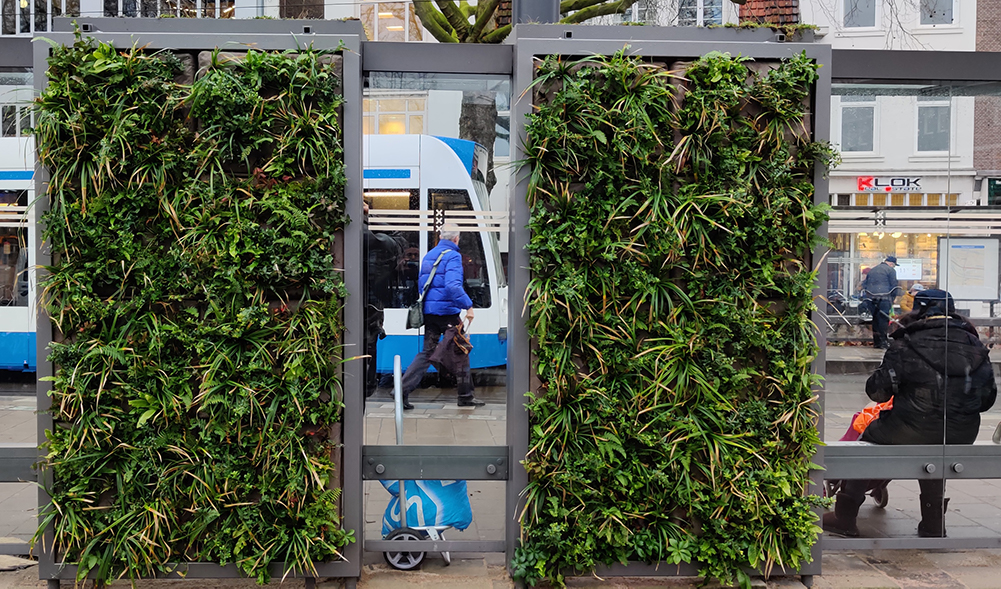
- Sustainable Planet -
- 3mins -
- 1,757 views
First Utrecht turned 316 bus stops into bee stops — now other cities are catching the buzz with green roofs!
In 2019, the Dutch city of Utrecht revolutionized urban sustainability by installing sedum-covered green roofs on 316 bus stops, inspiring cities worldwide to adopt similar eco-friendly infrastructure.
Utrecht’s Innovative Green Bus Stops
These green roofs help capture particulate matter, store rainwater, provide cooling during hot weather, and enhance urban biodiversity by attracting bees, bumblebees, butterflies, and other insects.
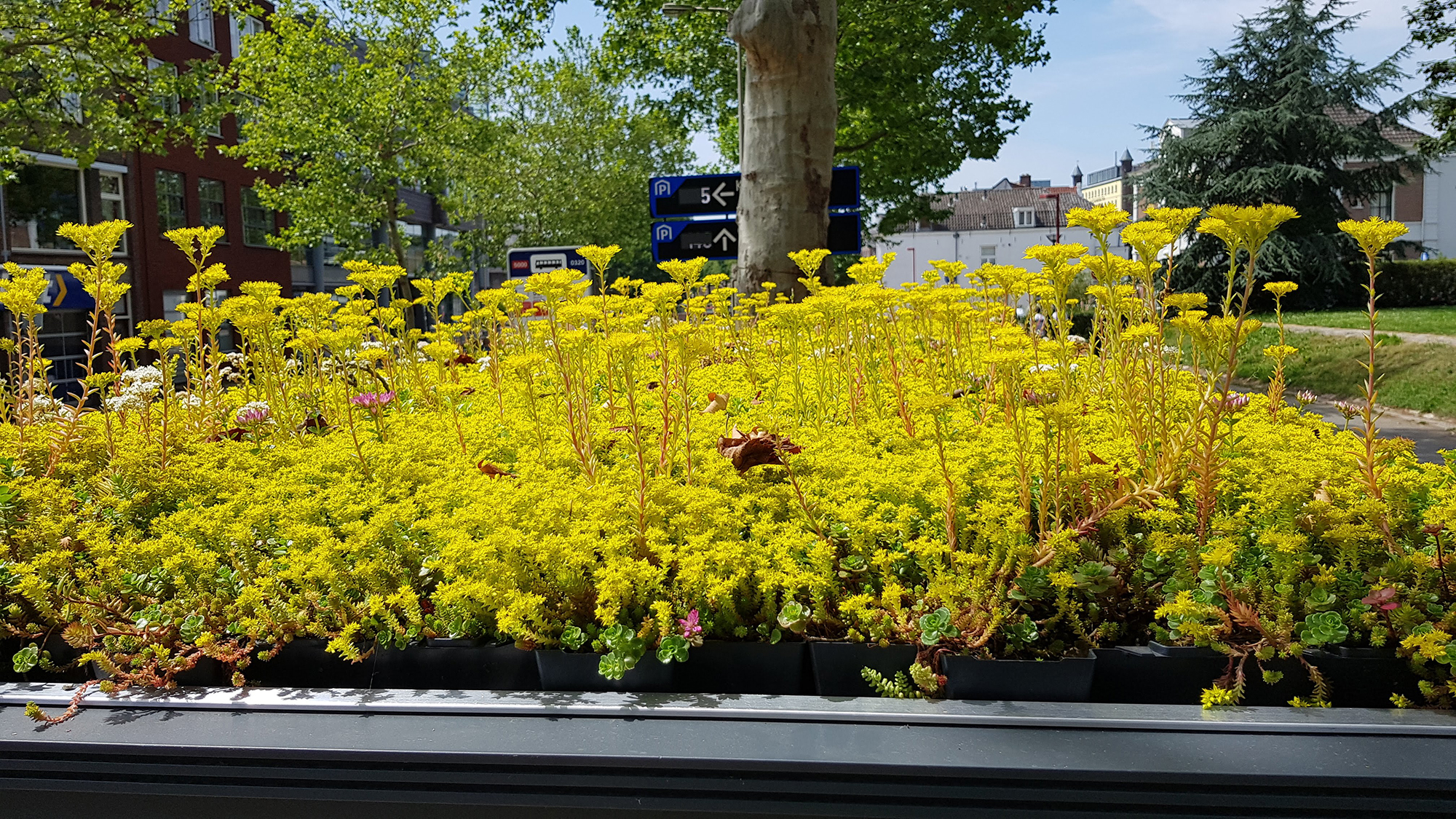 Sedum plants The roofs mainly have sedum plants. They are maintained by municipal workers who drive around in electric vehicles. Source: BrightVibes
Sedum plants The roofs mainly have sedum plants. They are maintained by municipal workers who drive around in electric vehicles. Source: BrightVibes
Sustainable Bus Stop Features
Utrecht has also installed solar panels on 96 bus stops. All stops feature energy-efficient LED lighting and sustainable bamboo benches. Sedum, known for its resilience and low maintenance needs, was chosen for its ability to thrive in dry periods.
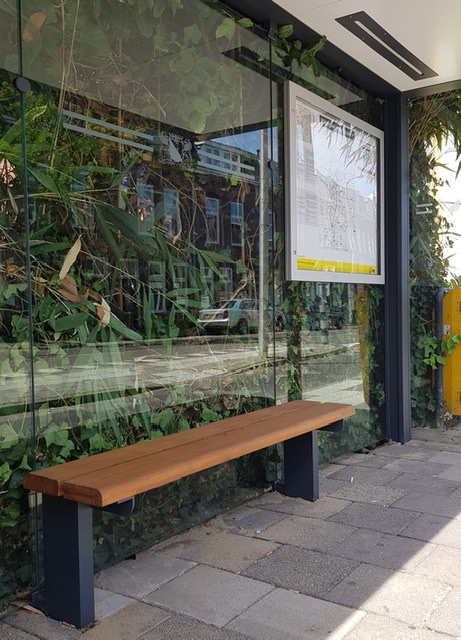
LED lights illuminate Utrecht’s bee stops. Utrecht’s bus stops are outfitted with efficient LED lights and a bamboo bench. Source: BrightVibes
Eco-Friendly Maintenance
Maintenance is conducted using electric vehicles, reinforcing the city’s commitment to sustainability and a healthy environment. This project was part of a new contract awarded to RBL Outdoor in collaboration with Clear Channel, funded by advertising revenue, ensuring no additional cost to the city.
Benefits of Green Roofs
- Air Quality: Captures fine dust particles.
- Water Management: Retains rainwater.
- Temperature Regulation: Provides cooling during heatwaves.
- Biodiversity: Supports various pollinators, including bees.
Global Influence and Adoption
Utrecht’s initiative has inspired other cities worldwide to adopt similar green infrastructure, demonstrating a growing trend towards urban sustainability. Examples include:
- Leicester, UK: Installing 30 ‘living’ bus shelter roofs.
- Brighton, UK: Launched its first plant-topped bus shelter in Palmeira Square.
- Pilsen, Czech Republic: Installed green roofs on two public transport stops.
- Amsterdam, Netherlands: Introduced green tram shelters with automatic irrigation systems.
Amsterdam introduced the first green tram shelter that automatically waters the plants, using its own irrigation system that works with locally collected rainwater. In summertime, it can provide cooling, and its plants contribute to cleaner air. Once the pilot scheme has proven successful, Amsterdam could start transforming all 500 tram shelters. Oh, and did you know that Amsterdam’s trams are 100% powered by Dutch wind energy? Source: BrightVibes
Exploring New Plant Options
Utrecht is now experimenting with other plant species on some bus stops to see if they attract more bees and provide additional benefits. This ongoing research will determine the potential of alternative plants for urban green roofs.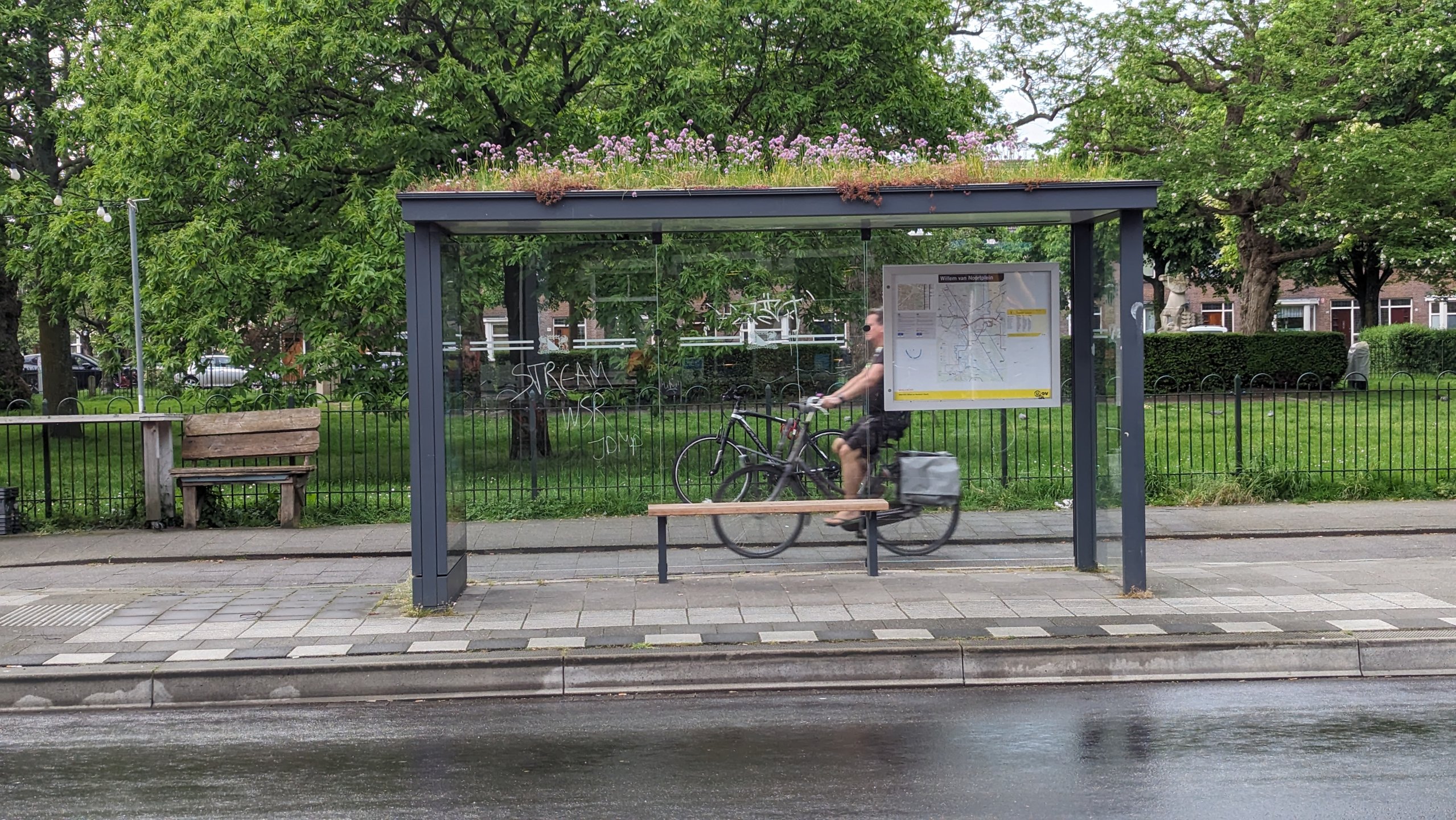 The bus stop at Willem van Noortplein, Utrecht, has been given other plants. Sedum was chosen for the roofs of the bus shelters at the time, as this plant can do well without water in dry periods and requires little maintenance. However, the municipality is now curious as to whether other plants and herbs can also do good work on the bus shelters. The sedum in some bus shelters was, therefore, replaced by other plants, and the effects of this will be examined in the coming period. It will be examined whether, for example, more bees are attracted to it.
The bus stop at Willem van Noortplein, Utrecht, has been given other plants. Sedum was chosen for the roofs of the bus shelters at the time, as this plant can do well without water in dry periods and requires little maintenance. However, the municipality is now curious as to whether other plants and herbs can also do good work on the bus shelters. The sedum in some bus shelters was, therefore, replaced by other plants, and the effects of this will be examined in the coming period. It will be examined whether, for example, more bees are attracted to it.
The Bee Sting Myth
Some might worry about bee stings at these “bee stops,” but there’s no need for concern. Bees are attracted to the plants and flowers on the roof, not to the people sitting underneath. Unlike more aggressive wasps, bees are generally non-aggressive and pose little risk to bus stop users. Read more here.
Better buses
Recently, Utrecht has replaced 10 diesel buses with electric buses. Utrecht aims to operate only CO2 neutral buses by 2028. In the meantime, Utrecht incentivises bus drivers to adapt to a more environmentally friendly driving style. The buses register how efficiently and comfortably each bus driver operates the bus, and based on how well they drive, they can “win” prizes the cleaner, more comfortable, and safer they drive.
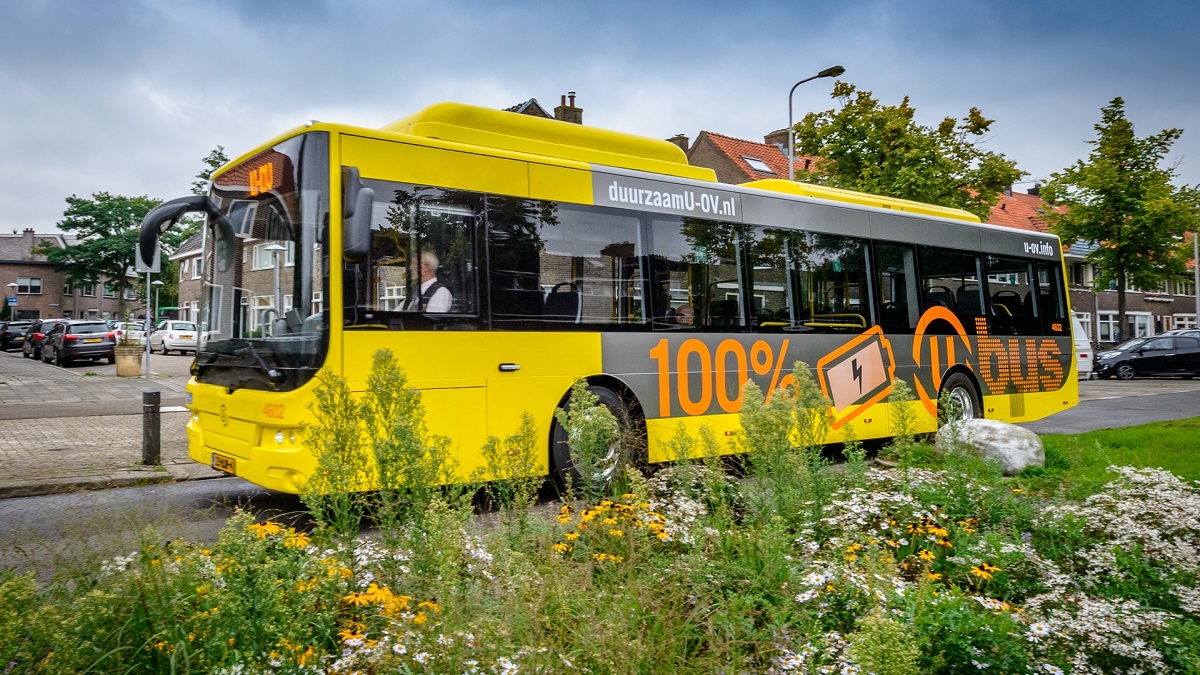
More electric buses Utrecht is expanding the number of buses powered by electricity. The electricity used by Utrecht comes from Dutch windmills. Source: Provincie Utrecht
Green Roof Subsidies
Residents can apply for a subsidy to install green roofs on their buildings through the city’s Groene Daken subsidy program. More information is available on the city’s website.
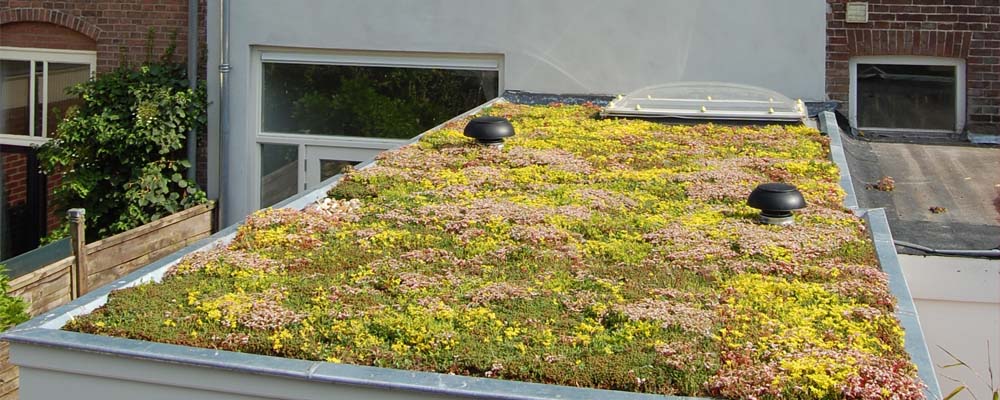
The citizens of Utrecht are incentivised to transform their own roofs into green roofs, too, and can apply for special subsidies. Source: Utrecht.nl
